Power is often the first word that comes to mind when looking at the regal Cane Corso. With their striking appearance and muscular frame, it’s no wonder so many dog lovers have fallen head over heels for this breed.
Though the Cane Corso is powerful, they are not immune to health issues that can impact the breed. If you plan to welcome a Cane Corso into your family, then it’s time to learn about the potential health complications your canine companion could face!
Let’s discuss 10 common health issues seen in the Cane Corso!
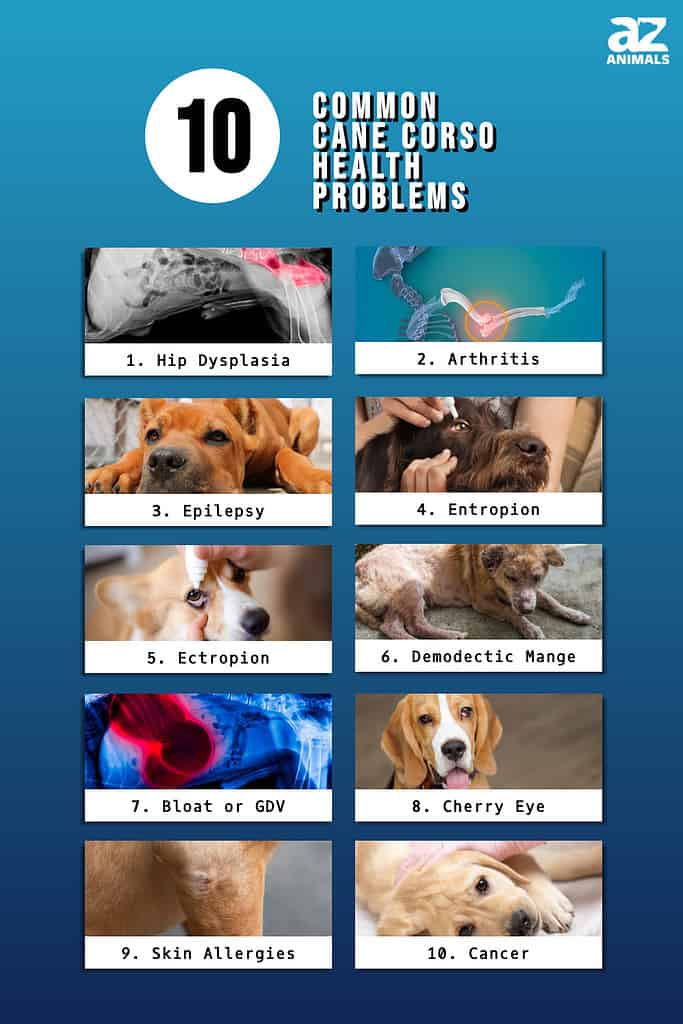
10 Common Health Issues Seen In The Cane Corso

The Cane Corso is fiercely devoted to his family, but he doesn’t care for strangers or small animals.
©Dioniya/Shutterstock.com
Though the average Cane Corso will live a long and happy life at your side, they are at risk of developing a few common health complications. Let’s break them down in detail below!
#1 Hip Dysplasia

Hip dysplasia refers to the improper alignment of the canine hip joints, leading to instability and laxity within the hips.
©Intarapong/Shutterstock.com
Hip dysplasia is unfortunately very common in the Cane Corso. Hip dysplasia refers to the improper alignment of the canine hip joints, leading to instability and laxity within the hips. This causes the hips to rub and grind each time the dog takes a step, eventually leading to painful breakdown within the hip joints over time. This is not only uncomfortable as it occurs, but it will only worsen over time.
Some common signs of hip dysplasia in the Cane Corso include joint stiffness in the hind legs, limping, muscle wasting around the hips, hesitance with jumping onto furniture, difficulty getting up and down, pain in the hind legs, and disinterest in exercise.
#2 Arthritis
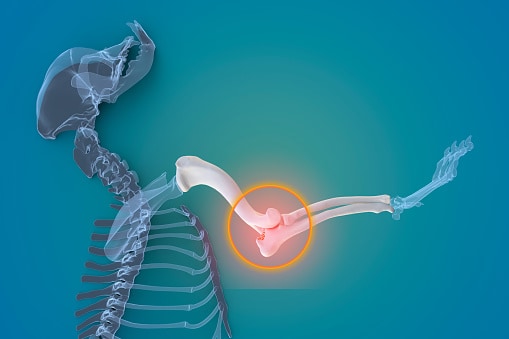
Canine Arthritis and Osteoarthritis joint inflammation are some conditions that can affect Cane Corsos.
©humonia/iStock via Getty Images
Arthritis refers to the inflammation and breakdown of a dog’s joints over time. This degenerative breakdown of the joints can deeply impact a dog’s quality of life, making everyday tasks feel much more challenging. Arthritis can develop due to breed susceptibility, obesity, previous muscle or bone injury, and more. 1 in 3 dogs will suffer from some form of arthritis as they age, but you can manage joint breakdown with the use of daily joint supplements and weight management.
Some of the most common signs of arthritis in the Cane Corso include joint stiffness, difficulty getting up and down, occasional limping, disinterest in activity, joint swelling, pain when the limbs are touched, and muscle wasting.
#3 Epilepsy
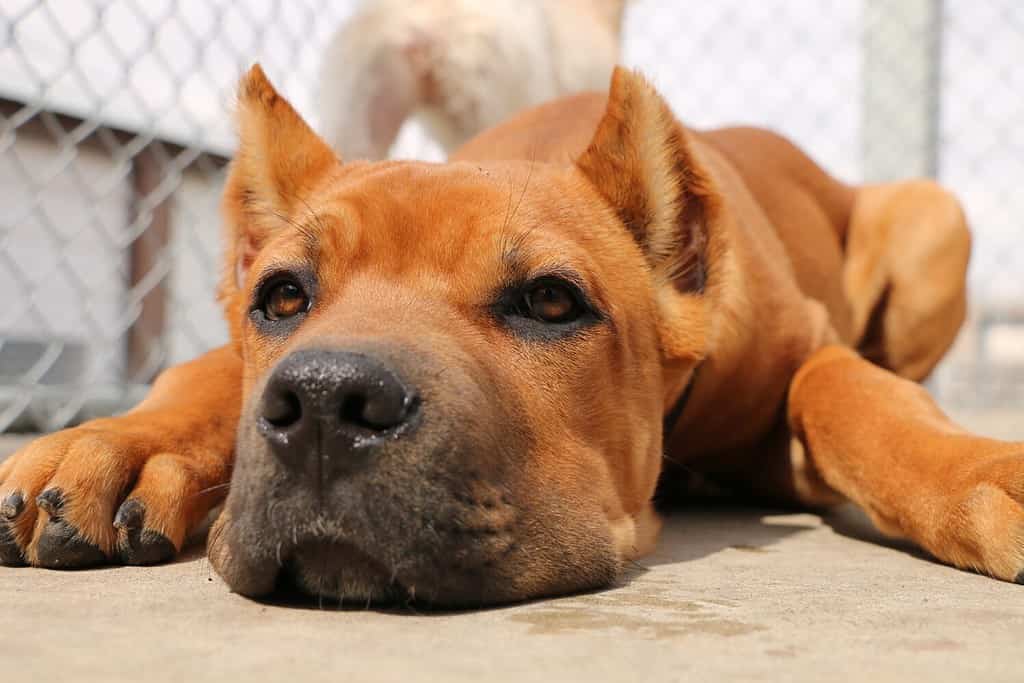
Epilepsy appears to be heredity in the Cane Corso due to its prevalence in the breed.
©Alisha Falcone/Shutterstock.com
Epilepsy is a neurological condition that causes muscle tremors and seizures in dogs. Epilepsy in the Cane Corso is often idiopathic, meaning there is not an exact cause of the seizure disorder that veterinarians can pinpoint. Epilepsy appears to be heredity in the Cane Corso due to its prevalence in the breed, and it usually develops around 2-3 years of age.
Epilepsy in dogs can lead to muscle tremors, seizures, disorientation, hallucinations, and changes in behavior. Epilepsy can be managed with daily seizure medication, so it’s important to have your Cane Corso assessed by a vet if they ever develop seizures.
#4 Entropion
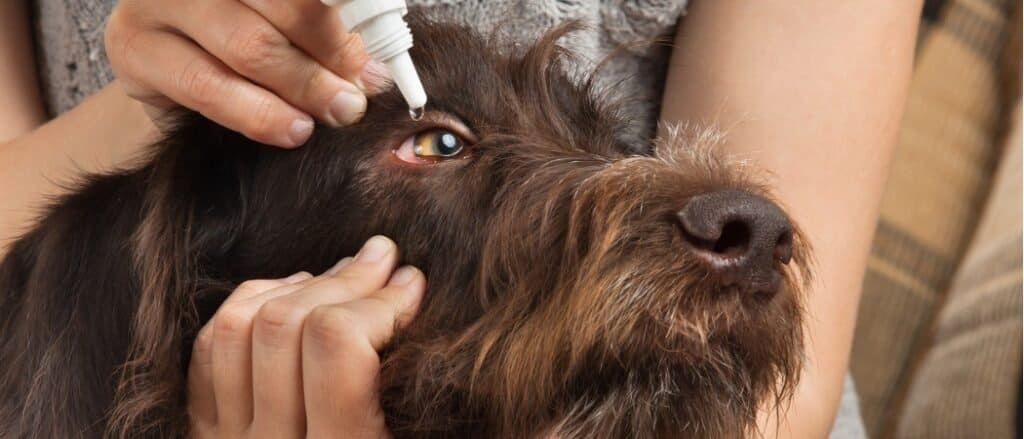
The most common symptoms of entropion in the Cane Corso include eye discharge, eye-watering, red eyes, pawing at the eye, and chronic eye infections.
©iStock.com/PavelRodimov
Entropion in the Cane Corso occurs when the upper or lower eyelid rolls inward, causing the eyelashes to rub against the eye itself. Constant contact with the eyelashes often leads to irritation and an increased risk of infection, and many dogs will even develop painful corneal ulcers.
The most common symptoms of entropion in the Cane Corso include eye discharge, eye-watering, red eyes, pawing at the eye, and chronic eye infections. Most dogs with entropion will need eye surgery to put an end to the constant eye irritation.
#5 Ectropion

Ectropion causes a droopy appearance of the eyes, and they may even look red and irritated.
©Jus_Ol/Shutterstock.com
Ectropion in the Cane Corso occurs when the eyelid rolls outward. This often causes a droopy appearance of the eyes, and they may even look red and irritated. This abnormality of the eyelid makes it more challenging for the eyes to lubricate properly, and it also exposes them to dust and debris that can enter the eye. Many of these pups will suffer from chronic conjunctivitis, and they may even need to rely on eye drops to keep their eyes lubricated.
#6 Demodectic Mange
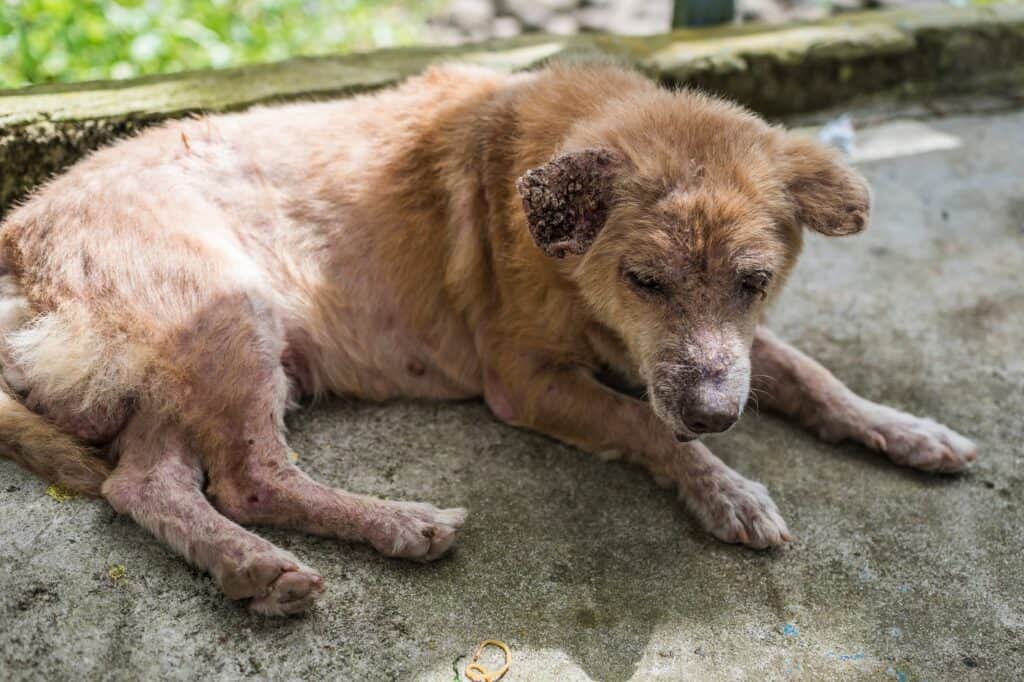
Demodectic mange causes hair loss, itching, and crusting of the dog’s skin.
©MDV Edwards/Shutterstock.com
Demodectic mange occurs when there is an overgrowth of Demodex on the surface of your dog’s skin. Demodex is a naturally occurring mite that lives on all dogs, but they can multiple out of control if the dog is compromised in any way. This causes the Demodex mites to take over and attack the hair follicles, leading to patches of fur loss and skin irritation. A Cane Corso with demodectic mange will need to seek veterinary care to get their mite burden back under control!
#7 Bloat or GDV
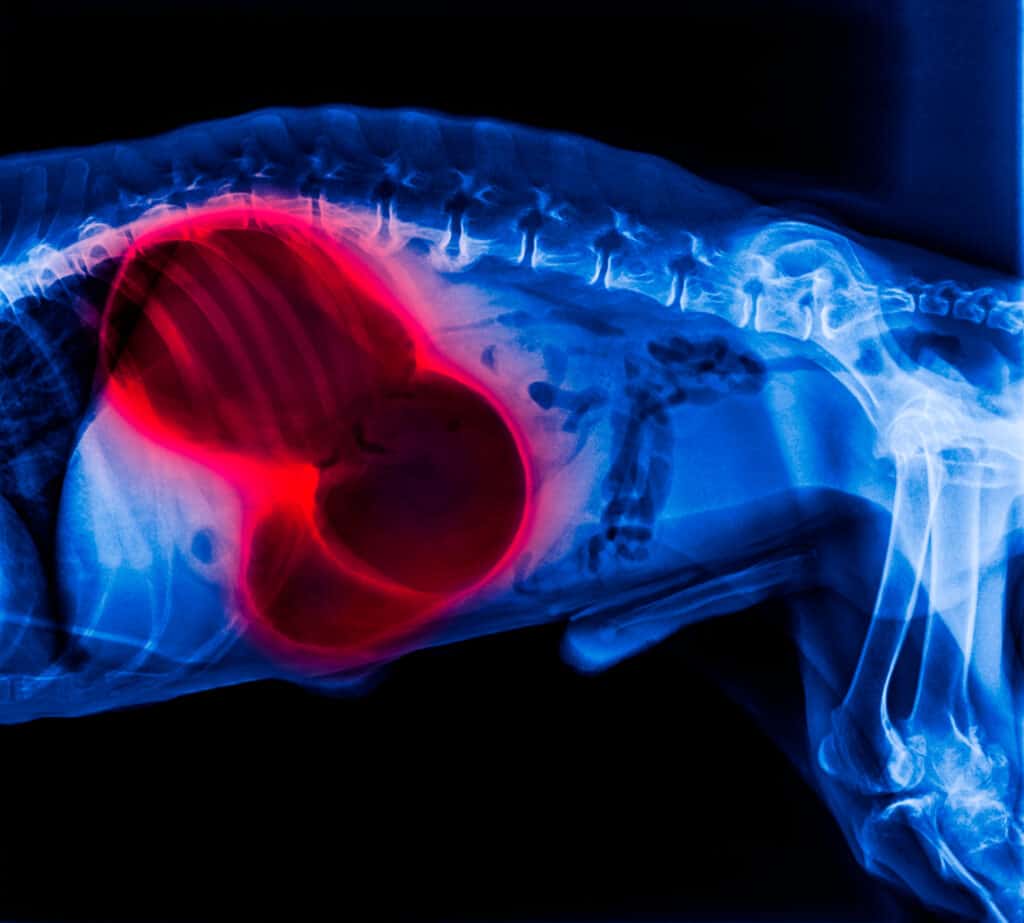
X-ray of dog lateral view red highlighting gastric dilatation volvulus (GDV).
©Intarapong/Shutterstock.com
Bloat, or gastric dilatation volvulus, is a common health complication that can occur in dogs with deep chests. Bloat occurs when the dog’s stomach flips on itself, trapping the contents of the stomach and preventing blood flow to the rest of the digestive tract. Bloat or GDV is one of the most serious medical complications that can occur in dogs, as all dogs will die if they do not seek urgent medical care.
Some of the most common signs of bloat in dogs include sudden weakness, retching without any vomit production, abdominal swelling, pale gums, weak pulses, and collapse. It’s essential to get your Cane Corso to a vet immediately if they develop any of these symptoms.
Dr. Amy Nicole Lewis, a veterinarian with Worldwide Veterinary Services told A-Z Animals that bloat is considered the mother of all emergencies in the veterinary world. Dogs will require immediate and aggressive vet care if they ever experience GDV to save their lives, which is why many Cane Corso parents choose to perform a gastropexy on their dog at a young age. This procedure involves tacking the stomach so it cannot flip on itself in the future. You can always ask your vet about this procedure when you first adopt your Cane Corso.
#8 Cherry Eye

Cherry eye occurs in dogs when the tear gland of the eye prolapses, leading to a red mass in the inner corner of the dog’s eye.
©Warut Chinsai/Shutterstock.com
The cane Corso is predisposed to an unsightly eye condition known as cherry eye. Cherry eye occurs in dogs when the tear gland of the eye prolapses, leading to a red mass in the inner corner of the dog’s eye. This is just a cosmetic issue in some dogs, but it can also lead to chronic dry eye due to the involvement of the tear gland. Your Cane Corso may require surgery to resolve this eye abnormality.
#9 Skin Allergies
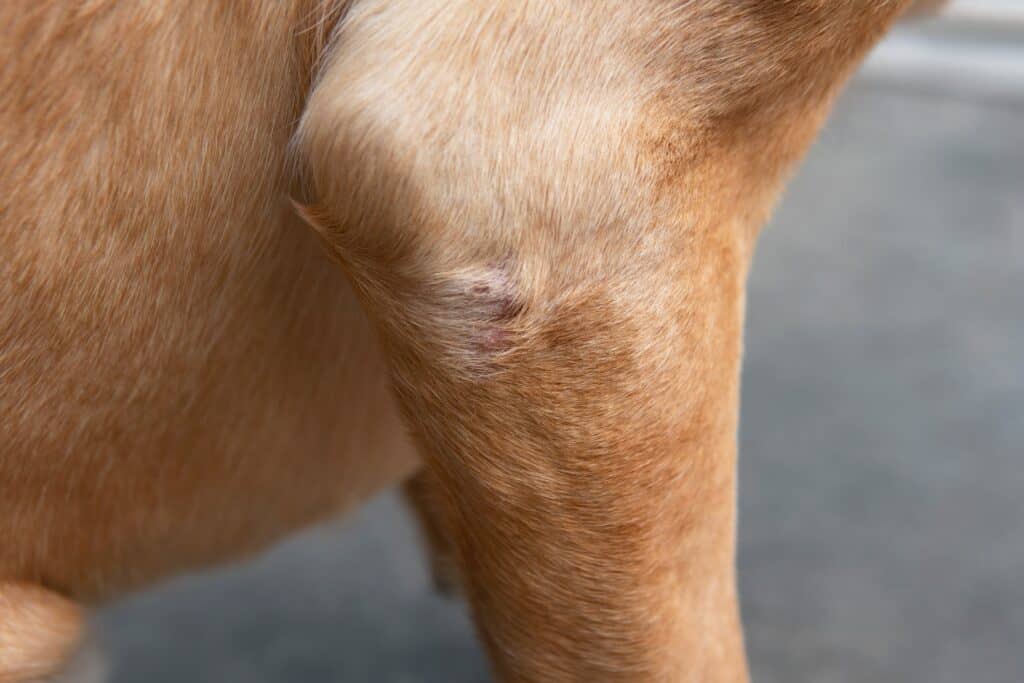
Your Cane Corso can be allergic to a variety of plant materials and pollen in the world around them, leading to a slew of uncomfortable skin complications to follow.
©9gifts/Shutterstock.com
The Cane Corso is prone to experiencing seasonal allergies. Your Cane Corso can be allergic to a variety of plant materials and pollen in the world around them, leading to a slew of uncomfortable skin complications to follow. Some of the most common signs of skin allergies in the Cane Corso include skin redness, constant itching, frequent ear infections, excessive shedding, patches of fur loss, skin sores, and skin odor.
A Cane Corso that suffers from seasonal allergies each year may benefit from prescription allergy medication from their veterinarian, or even medication that is designed to interrupt the itch receptors in their brain. A trip to the vet can introduce you to a variety of options to tackle their itchy allergies.
#10 Cancer
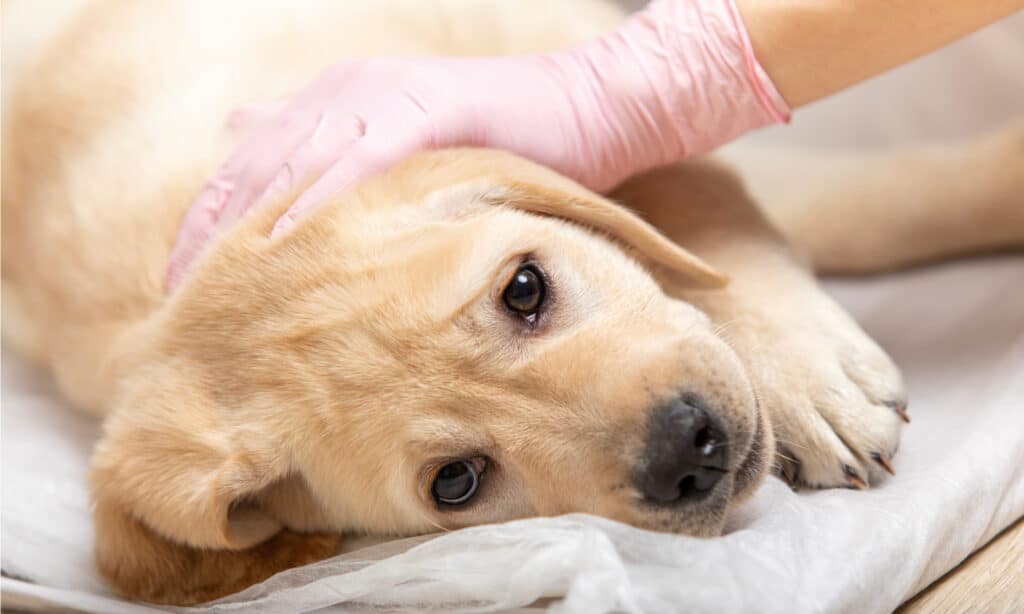
Osteosarcoma is the most common form of cancer seen in the Cane Corso, and this type of cancer impacts the bones.
©Olya Maximenko/Shutterstock.com
Unfortunately, our Cane Corso companions are not immune to developing cancer. Osteosarcoma is the most common form of cancer seen in the Cane Corso, and this type of cancer impacts the bones. Osteosarcoma is known to metastasize fairly quickly, so average life expectancy is often six to 11 months based on the treatment option offered.
Some of the most common signs of osteosarcoma in dogs include lameness or limping, swelling of the limb, lethargy, and weight loss. We suggest having your dog assessed by a vet promptly if they experience any of these symptoms.
Summary of 10 Common Cane Corso Health Problems
| Rank | Health Issue | Symptom |
|---|---|---|
| 1. | Hip Dysplasia | Joint stiffness |
| 2. | Arthritis | Joint swelling |
| 3. | Epilepsy | Muscle tremors |
| 4. | Entropion | Eye discharge |
| 5. | Ectropion | Droopy eyes |
| 6. | Demodectic Mange | Furr loss |
| 7. | Bloat or GDV | Pale gums |
| 8. | Cherry Eye | Red mass in eye |
| 9. | Skin Allergies | Frequent ear infections |
| 10. | Cancer | Limping |
Final Thoughts On Cane Corso Health Issues
The Cane Corso is prone to developing various medical conditions that can impact their quality of life. Establishing a close relationship with a veterinarian the moment you adopt your Cane Corso is essential, as this will help you stay on top of your pup’s health as the years go by. We also suggest looking out for any of the symptoms we discussed above, as this will allow you to seek medical care for your canine friend when needed!
The photo featured at the top of this post is © Sbolotova/Shutterstock.com
Ready to discover the top 10 cutest dog breeds in the entire world?
How about the fastest dogs, the largest dogs and those that are -- quite frankly -- just the kindest dogs on the planet? Each day, AZ Animals sends out lists just like this to our thousands of email subscribers. And the best part? It's FREE. Join today by entering your email below.
Thank you for reading! Have some feedback for us? Contact the AZ Animals editorial team.






